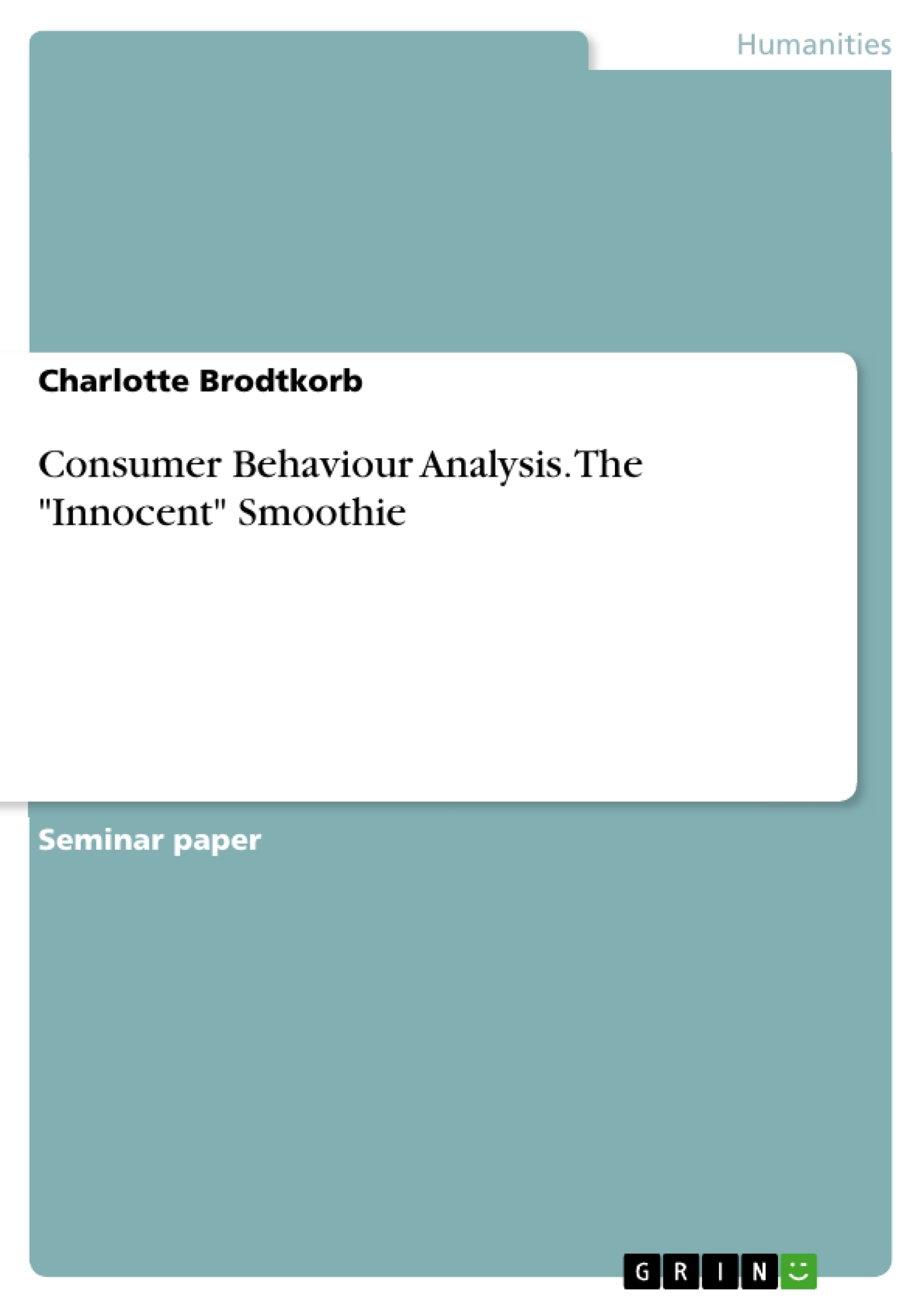This report examines consumer behaviour in the context of the purchase of a smoothie produced by market leader Innocent Drinks. Based on a hybrid segmentation approach, the company is targeting a group amenable to the consumption of health foods in terms of preferences and resources.
Benefitting from a strong position in the children's as well as in the adults' smoothie sector, Innocent build on their first-mover advantage by maintaining an original brand image characterised by friendliness and approachability through utilisation of marketing mix elements.
Pricing strategies and communications mix are tailored to the target segment. Innocent successfully compete on differentiation, focussing on product quality and sustainble business practice. It is, however, suggested that they publicise their CSR initiatives on a broader scale and and target children more directly for their "Kid's Smoothie".
Inhaltsverzeichnis (Table of Contents)
- Terms of Reference
- Introduction: About the Innocent smoothie
- Segmentation, Targeting, Positioning
- Segmentation Approaches used by Innocent
- The Innocent smoothie consumer in the VALS Framework
- Target Customer Profile
- Positioning of the Innocent Smoothie
- External Influences on the consumer's decision
- Reference Groups
- Families and Household decision making
- Friendship groups
- The Buying Process
- Problem recognition
- Information Search
- Evaluation of Alternatives
- Purchase
- Post-purchase Evaluation
- Innocent's Marketing Efforts
- Product
- Price
- Promotion
- Place
- Conclusions and Recommendations
Zielsetzung und Themenschwerpunkte (Objectives and Key Themes)
This report explores consumer behaviour related to the purchase of Innocent smoothies. It aims to analyze how Innocent Drinks, a market leader in the smoothie sector, targets consumers based on their preferences and resources. The report examines their segmentation, targeting, and positioning strategies, considering the influence of external factors and the consumer buying process.
- Consumer behaviour in the context of smoothie purchases
- Innocent Drinks' segmentation, targeting, and positioning strategies
- The influence of reference groups on consumer decisions
- The consumer buying process and its stages
- Innocent's marketing mix elements and their effectiveness
Zusammenfassung der Kapitel (Chapter Summaries)
The report begins by establishing the scope and purpose of the research, introducing Innocent Drinks and their signature smoothie product. The second chapter provides an overview of the company's segmentation, targeting, and positioning approach. This includes an examination of their use of the VALS Framework to understand their target customer profile and how they position their product within the market. Chapter four explores external influences on consumer decisions, focusing on the role of reference groups, particularly families and friendship groups. The fifth chapter dives into the consumer buying process, outlining the stages from problem recognition to post-purchase evaluation. Finally, the report examines Innocent's marketing efforts, analyzing their product, pricing, promotion, and distribution strategies.
Schlüsselwörter (Keywords)
The key terms and concepts explored in this report include consumer behaviour, segmentation, targeting, positioning, VALS Framework, reference groups, consumer buying process, marketing mix, Innocent Drinks, smoothie, and sustainability.
- Quote paper
- Charlotte Brodtkorb (Author), 2012, Consumer Behaviour Analysis. The "Innocent" Smoothie, Munich, GRIN Verlag, https://www.grin.com/document/448720



